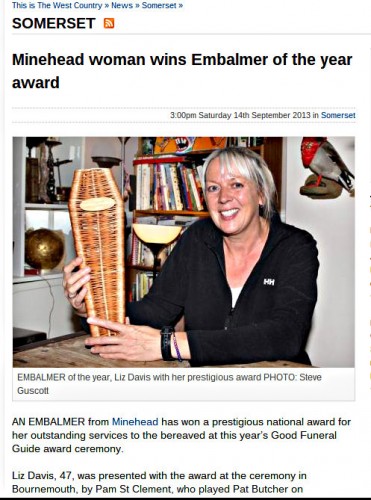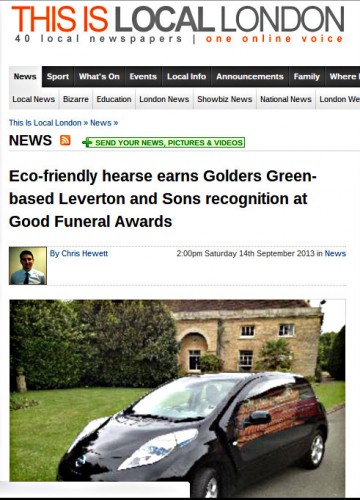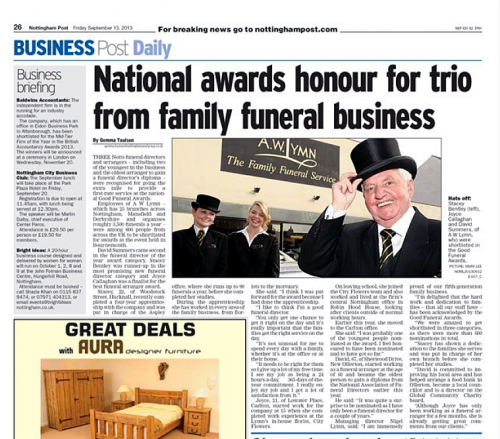Posted by Richard Rawlinson
With the trend for approaching funerals as celebrations of life, I gather it’s become more fashionable to wear bright colours that challenge the convention of wearing black for mourning.
Is this the experience of undertakers and celebrants here? If so, are people dressing down in line with the general trend for more casual attire, or are they continuing to dress up for funerals, only without sticking to black?
How popular is it for a specific colour to be requested because it’s the favourite of the deceased person: a Liverpool supporter being honoured, for example, by guests wearing red?
Do many undertakers now ditch the black, too? And how do celebrants dress to either blend in or set themselves apart from the congregation/audience?
I’d welcome your insights into the contemporary scene, not attending many funerals myself, and those I do go to tending towards traditional black.
There’s no right or wrong here but I’ll nail my colours to the mast by saying I like to witness a sea of monochrome mourners, reminiscent of the throng at a school assembly. There’s something unifying and democratising about a uniform on certain occasions. Bonded by a common thread, black says, ‘we’re all in it together’, no one standing out as either above or below another.
Black is also practical, not just because it conceals grimy marks, but because most of us possess a dark suit and white shirt so we don’t need to rush out to buy something new. Then there’s the claim I recently read online that bright colours make people cry! I quote: ‘Smiles are terrible for depressed people, it’s like the person is happy about our pain if they wear bright colours. Basically because misery loves company’.
Black has symbolised many things over the years, from evil to virtue, wealth to poverty, puritanical unworldliness to the height of fashion. In Roman times, the Emperor wore purple, soldiers wore red, priests wore white and artisans wore black, albeit primitively dyed meaning clothes soon faded to murky grey. Black togas were, however, worn for funerals.
In the Middle Ages, black was associated with the devil, although it was also worn by Benedictine monks as a sign of humility and penitence. Aristocrats showed their wealth through bright colours and, in some parts of Europe, commoners were prohibited from wearing these colours denoting noble rank. Wealthy merchants in northern Italy responded by choosing black robes in the most expensive cloths.
Black became emblematic of Protestantism, and a reaction against the opulence of Catholic church interiors, and the red worn by the Pope and Cardinals. Artists took sides, too, with Protestant Rembrandt using a sober palette of blacks and browns, and Catholic Rubens favouring rich brights. At the same time, all churches in the 17th century became superstitious about witchcraft, persecuting unfortunate women who kept a black cat.
With the emergence of the middle classes in the 18th and 19th centuries, a dark, sober wardrobe became fashionable across society in Europe, not just for mourning. It was the colour of the French Revolution and of the Industrial Revolution, fuelled by coal and oil. It was the colour favoured by romantic poets such as Shelley, usually portrayed in black jacket teamed with an open white shirt.
In the 20th century, black was the colour of fascism, but also Parisian intellectuals and New York beatniks. Chanel pioneered the Little Black Dress, Marlon Brando was the pinnacle of cool in his biker leathers in The Wild One and, later, punks and goths saw black as part of their rebellious subculture.
And here we are today. Black tie parties are now few and far between, and black is not necessarily expected at funerals.
Footnote: You can stop reading here but, while on the subject of sartorial traditions, I’ve been vexed of late about why we always associate the fez with the smoking jacket. Why do we see Victorian gents wearing this cap and jacket ensemble when relaxing at home, when usual etiquette is for men to uncover their heads indoors?
As with so much menswear history, the answers are practical first, aesthetic second. In the days before central heating, the cap kept one warm when indulging in a sedentary activity such as reading in a library chair, cigar in hand. As this is a private domestic activity the no-headwear-indoors rule doesn’t apply.
The small size and softness of the fez/smoking cap is also more comfortable than a more formal head-warmer such as hard topper or bowler, just as a velvet/silk-quilted smoking jacket/robe is more comfortable than a tailored morning coat designed to be worn out and about during the day.
Finally, the smoking cap and jacket protected the hair and regular clothing from the smell of smoke.
As well as being lightweight and protective against draughts and odour, the classic fez style of Ottoman origin—cone-shaped red felt with a black tassel—became popular for aesthetic reasons, too, conjuring up a backstory of a British gent who was well-travelled and worldly. The style was adapted as a velvet cap, decorated with gold embroidery, giving fiancés and wives something to work on as a personalised, home-made present for the man in their life.
It would have been as bad form to wear this intimate, domestic cap at one’s club as it would be to walk out in a nightgown. Wearing a hat in a public interior is a criticism of the host’s temperature control, and if you’re worried about smoke in your hair in a communal smoking room, you should perhaps stay away.





